
As far as I understand, you worked at the BYHMC and were its chief operating officer from the very beginning?
Yes, I worked since 2015, virtually from the first day. Starting with the name, visual identity, mission explained on the web page, basic historical narrative, land plot issue – the entire foundation existing today, it was made during the previous years, from 2015 to 2019. We created an entire compendium of documents: policies, procedures, values, missions – the historical narrative alone says a lot. A titanic work was made in order for the memorial centre as an idea to start taking shapes of an exemplar international institution.
What was your personal motivation to start doing that? What had you been before that? Is it a step up for your career?
My specialisation is management of social and cultural projects, I manage projects in arts and humanities. All these years, I have been also doing research work, I graduated from the Philosophy Faculty in Odesa, and then I entered postgraduate studies in France where I have completed my PhD thesis this year. I lived in Paris for some time and completed studies at a business school there as well – now, I have an MBA degree in cultural management.
Then, I was an intern in Brussels at a consulting company specialized in creative economy and cultural policies, KEA European Affairs, and I worked as a project manager there. I mean, all my experience is tissued out of different positions in various cultural initiatives in Ukraine and beyond.
After education in France, I returned to Ukraine. I came here and I met Myhailo Reva, an Odesa-based sculptor and architect who had happened to take part in the architectural competition for the best project in Babyn Yar. By that time, businessman Pavel Fuks and Vitaliy Klitschko had approached him, they got interested in that project and were thinking about its possible implementation.
I took part in those meetings, the very early negotiations about a possible bringing to life of specifically Mykhailo’s project. In 2015, Vitaliy Klitschko gave a press conference where he announced for the first time his intention to do his best during his term to establish the Memorial in Babyn Yar.
On the day of his inauguration, Vitaliy Klitschko appointed me as a coordinator of the working group. Our task was to identify what was happening around Babyn Yar, what initiatives had been existing as of then, and what had to be done in order to ultimately create the memorial. That was a small working group without a formal status.
Some time later, donors who are funding it today (Mikhail Fridman, Victor Pinchuk, German Khan – ed. note) started showing interest in the project. The working process started getting more formalized, a foundation was registered, first seeding resources got allocated, and on the 29th of September, on the 75th anniversary of the events in Babyn Yar, a declaration of intent signing ceremony took place at the Shevchenko Museum. And that became an official starting point, preceded by a year of work in the format of a research and identifying of stakeholders, initiatives and the accumulated experience. That was what I had been doing.
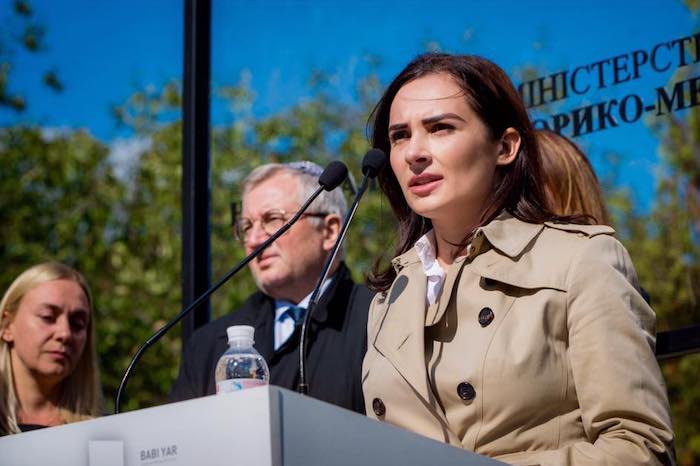
Then, I went from coordinating the working group over to the foundation, and started working on the position of chief operating officer.
This means that when we say today that the BYHMC is an exclusively private initiative, we are not 100% right? Klitschko still acts here as a representative of the state, and this could not be neglected.
No, we cannot neglect it. The foundation often said that we were seeking a governmental-private partnership, and the state is represented here by the Kyiv City State Administration. Kyiv’s mayor has been supporting the foundation since the very first day. When Vitaliy Klitschko got elected as the Mayor, he immediately identified this project as one of his strategic priorities.
You have had your specific communication with the Ministry of Culture too. What was your communication with the Institute for National Memory like? As far as I understand, the dialogue was more critical than with the others.
A point about our relations with the authorities. In 2017, a cooperation memorandum was signed between the Ministry of Culture, the Ministry of Education, the Kyiv City State Administration, the Babyn Yar National Reserve and the foundation as the fifth party.
That memorandum describes responsibilities of each of these parties. As a result, a working group was established that included representatives of each of the parties. And under that memorandum, we launched some projects: for instance, with the Ministry of Education, it was an all-Ukrainian competition for postgraduate scholarships. It was held two consecutive years, but this year, it has not taken place. It may be not a high profile event for the general public, but it is important for those who explore the subject. It is a strategic partnership with the authorities.
The ministry of culture was involved in the development of terms of reference for the architectural competition, and the minister was part of the competition jury.
We did not have formal relations with the Institute of National Memory, but we invited its representatives to all relevant events. We did not have strong disagreements, but I can say that Volodymyr Viatrovych came to all the events related to the basic historical narrative, and he always voiced his remarks, which we took into account and integrated in our work.
One of the most debated issues in relation to the Memorial Centre is that one of the major donors is Mikhail Fridman, a big Russian businessman. Has he attempted to influence the Centre’s policy? How do you justify for yourself his involvement in such a project that is important to Ukraine?
Over the period of my work, there has never been pressure on the management. Nobody has ever suggested behind our backs how to write the narrative, what are the projects to make or which are not to be made – on the contrary, we felt freedom in making decisions. We had a feeling that we were delegated with a possibility to create this memorial.
The relations with the project donors were described and formalized, the same as with all the members of the Supervisory Board. It gathers twice a year, and makes key decisions on the team, on budgets, on communication strategies. That was the way we interacted.
The management has always been available for any questions, and therefore we gave the Board all comments requested.
Speaking of the Russian money. German Khan has 13 family members resting in Babyn Yar. I have 14 near Taganrog, in Petrushino Gully of Death. Therefore, I assume that a person may have a motivation to commemorate his or her relatives.
This subject has been debated in the media many times, and there is one answer: these people have a sentiment, and they have made a decision to commemorate these victims.
If there had been pressure from the part of the donors, nobody of the team that has left [at the end of the last year], would not have worked for so long. We are all Ukrainians, and we all have an active civic stance. And hence yes, it might be interpreted in various ways seen from outside, but as a matter of fact, we were not an outlet for someone’s interest.
How was the Scientific Council shaped? What was the way to select the pool of historians?
As we started thinking about the historical framework for the project, it became clear that we needed specialists in those aspects. Then, we started having contact with leaders in that field, both in Ukraine and beyond.
The major principle was to establish a balanced scientific council featuring both representatives of Ukraine and foreign academicians, both men and women, both established historians and aspiring researchers. I mean, to make this such a diverse scientific council.
Karel Berkhoff curated that work and consolidated the efforts of all the researchers. The Scientific Council is a multi-staged structure, which means that it comprises the authors of the basic historical narrative, those who wrote the articles. There is a committee of editors - those are people who, due to being restricted in availability, could not be involved in writing the narrative, but they proofread it for inconsistencies and errors. And then, the narrative, at a certain stage of preparedness, went to the reviewers. There were different kinds of reviewing: blind, semi-blind and open. All the remarks were collected, and the edited material was sent back to refinement. I mean, the narrative was written over years, and normally, this work must be pursued – the science develops, many facts and archives get revealed.
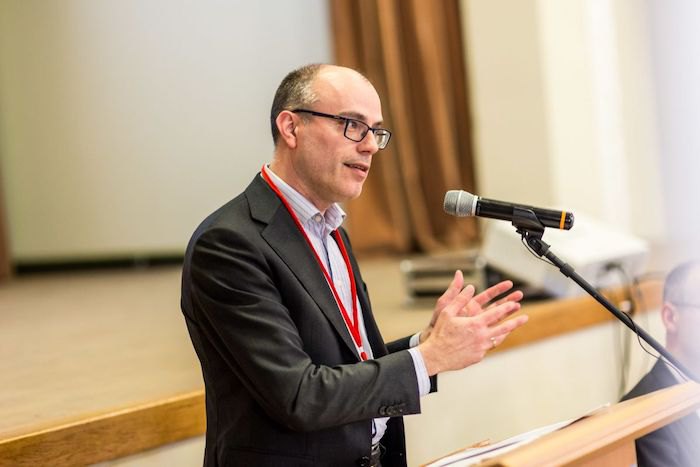
The basic historical narrative is not a mere academic document that guarantees accuracy of historical facts. It was a form to reach a certain social contract. This is very important for the memory of the Babyn Yar tragedy: what do we remember, how do we remember, whom do we remember, and what is the way we speak of given events.
The process of creation of the narrative was exactly that kind of talking through: what do we study? Do we employ the word “collaborationism”? No, we don’t. And what do we employ instead? “Strategies for survival” or for “cooperation”? These are finest semantic knots, and therefore, writing of the narrative is an exercise necessary to start speaking, and to hear the different sides. And we had a very respectful attitude towards opponents.
It is a very important document. There are not so many comprehensive documents telling the history of the Holocaust on the territory of today’s Ukraine and neighbouring countries.
What happened last year? As far as I know, Ilya Khrzanovskiy was in Kyiv starting from last summer, but he got appointed only by the end of the year.
The team that we ran with Hennadiy Verbylenko met Ilya Khrazonvskiy in March 2019, when he came to Kyiv for the first time. It was just an acquaintance – many people came upon the foundation’s invitation. Those were people who had varied backgrounds, a lot of consultations were held with professionals in various fields.
Then, a possible cooperation started being considered. I flew to London in May, and watched seven or eight films from DAU project, made some personal conclusions, and reported those to the project founders. Then, Ilya Khrzanovskiy presented a number of ideas about how the foundation’s activity could be “gassed up” and enriched with creative elements. Upon the project founders’ request, I wrote a review on those ideas and Ilya’s vision. The review was examined, but as far as I understand, it was not taken under advice, and then it became clear that I would leave soon.
However, the question relates not to existence of the “artistic director” position. The question relates to the scope of mandate and assignment of areas of responsibility. I understand the motivation of the Supervisory Board to make a certain creative breakthrough, and to invent a new figurative language. When such legendary people gather together, naturally, they have an ambition to create something incredible and to give this world something unseen before. However, the question is where the gravity centre is, and who is responsible for what. We were very much confused about the suggested reassignment of the roles.
Why?
Because we were suggested reattachment of virtually all the sections, including the scientific and the educational ones, to the artistic director. It is an entirely new map of functional responsibilities for a memorial institution.
That means, there was merely a restructuring of the foundation?
We were informed about the candidate for the artistic director position. His scope of responsibility was outlined, and it made clear that I would not be able to assume the function of chief operating officer anymore. I would not be able to guarantee that the project would be implemented within the frame of references announced before. I wrote dozens of articles about my vision of the project in Ukrainian, Israeli and UK media. Chief executive officer Hennadiy Verbylenko, I and many team members realized that a certain new stage started, and that the project was transforming into something new where we definitely did not belong.
What was your impression about the films that you saw?
I do not remember the titles of all the films I was shown. But the ones that I saw did not contain torture scenes. You know, I do not want to speak about DAU, I do not care about its role in art. Nor do I care at all about the destiny of Ilya Khrzanovskiy as a filmmaker and his contribution into filmmaking. I do care about the subject of Holocaust and memorialisation of Babyn Yar.
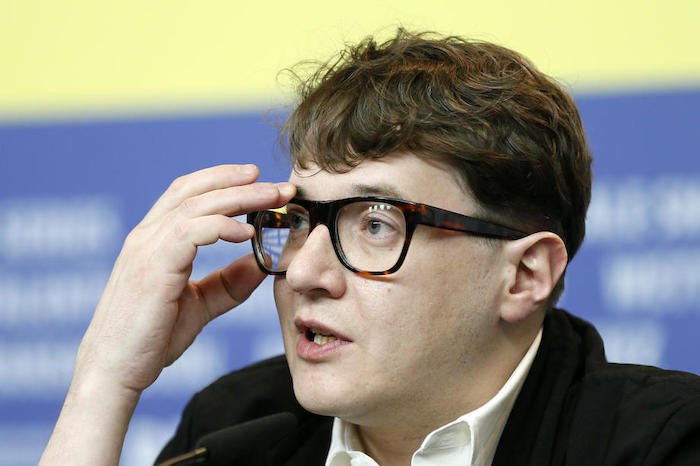
I think, distinction should be made between discussions about DAU and Babyn Yar. DAU is presented as an art project (speaking of wrongdoing will be possible after publication of court decisions). In the case of the Memorial, it is a debate about ethics, I mean, about boundaries of what is acceptable in commemoration. A memorial is something different in essence. An artist may provoke, scandalize or experiment. A memorial museum, however, works in a situation of a continuous debate about «red lines».
I have already explained my point in the review, and it was not only me, as it was a collective work, where we presented arguments for our viewpoint on six pages.
You mean the review on Ilya Khrzanovskiy’s concept that he presented to your team?
Rather one on the decision to appoint an artistic director with such a scope of mandate and with such a methodological framework. We are not flat functionaries who have simply got hired and do not care what and where to build. It is an ideological project. The people who worked there, adhered to a certain philosophy. And here, an entirely different ideological platform was suggested.
We [with Ilya Khrzanovskiy] belong to different frames of references. The project donors, the Supervisory Board members have the right to opt for one frame of references or another, and in the same way, I preserve my right not to work within it.
What is the essential difference between your ideological platform and what the new artistic director has proposed?
I can tell you a bit about mine. At the core of my frame of references are human rights, the value of human life and human dignity.
There is an understanding that a certain social agreement has to be established and that the attitude of today’s Ukrainian society is extremely important.
When we worked, we explored the history of Ukraine, Ukrainian-Jewish relations, the history of anti-Semitism, humanistic policies in general, civic education, commemorative practices, existing memory models, a modern Ukrainian’s identity, Ukrainian political nation. I might go on listing subjects that need to be taken into account when you work with the Babyn Yar memorialisation. I felt that the new management lacks sensitivity in these aspects.
Overall, I do not completely understand how an “unconventional Holocaust museum” can be created. When we attempt to create a Holocaust memorial centre, we play along rules apriori. There are hundreds of documents in the world that regulate memorial museums working with the genocide matter. It is advisable to managements of such organisations to know those by heart. We studied those documents, and it was a very slow and comprehensive effort. And our task was to reinforce the institution’s foundation with steel nails.
Somebody says that we were doing only administrative work, and now, they say, the Centre’s team will go creative. There are no administrative issues here at all, because any such issue is deeply rooted into ideology. Choosing of a name for the project, is it an administrative issue? Identifying a land plot for the construction, taking into account the boundaries of the Jewish cemetery in the very heart of the national reserve, is it about a back-office function? And creating the first public policy in Ukraine for collection development and management, is it administrative as well?
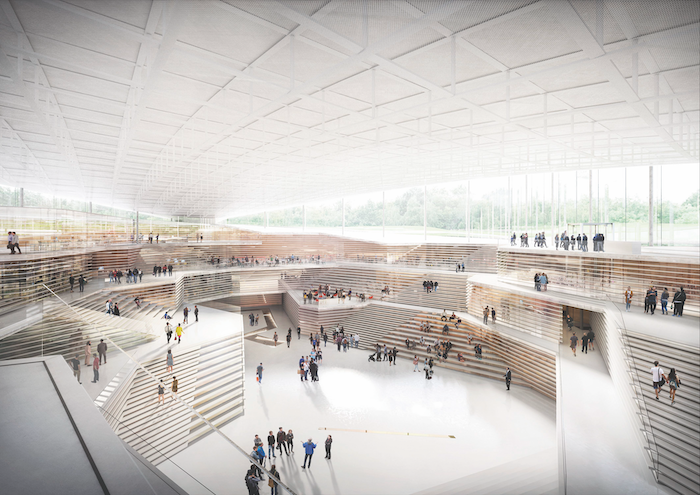
Therefore, I felt that with the assignment of the new project administration, it was about a new project, and not about a new stage in what we had been doing.
In one of your texts, you quote the term “Holocauster” as a matter of numerous debates among memorial leaders. Don’t you think that the concept that was presented by the new management is exactly “Holocauster”, a Holocaust-themed roller-coaster?
I cannot tell if what is announced in that presentation will be implemented. It will be possible to comment when a definitive version has been presented publicly.
I generally wonder if an unconventional Holocaust museum is possible to create? It will not be possible to bypass international standards, because the Holocaust was an international phenomenon, and its exploration must be of international nature.
The methods of creating large institutions differ from methods used to create art house projects, even though outstanding they are. One may attempt to extrapolate those methods onto work with memory, but then, it will not be the Babyn Yar Holocaust Memorial Centre. That will be a creative memory space or an experimental commemorative initiative. Whatever. But in no matter it will be a Holocaust centre in Ukraine, engaged in a dialogue with, for instance, Yad Vashem or the Washington Memorial. When it is claimed “Babyn Yar Holocaust Memorial Centre”, this imposes certain commitments and expectations. Immediately. One should understand that.
A memorial space must not horrify, depress, frustrate or dismiss the visitors’ belief in humanity. Yes, a person has to walk through on the edge of a precipice of horror and hopelessness, to look into the face of despair, but he or she must not be defeated by it, and must not fall down into that void.
We wanted to tell about the events in an accurate, argumented and emotional manner, but in such a way that space is left for hope, light, compassion, empathy, reverence for life, disgust for crime and, ultimately, for triumph of justice.
Do I understand right that a concept was proposed, your team did not accept it as it was, and decided that it was the end of the work, however, the donors and the Supervisory Board remained satisfied with it?
I do not know how the process of discussion of that concept ran within the Supervisory Board. We were informed about the decision. This was preceded by many-hour discussions between the management and the project founders, but ultimately, a decision was still made to create the position of artistic director in the person of Ilya Khrzanovskiy.
Then I left, I was the first. Hennadiy Verbylenko worked until late November, as long as the process of search and recruiting of a new chief executive officer (Max Yakover, – ed. note) continued. Hennadiy handed over the administration and left.
Therefore, it is not true that we were allegedly dismissed. Nobody fired anybody. At least, definitely not me and Hennadiy. There was no team change initially planned. More than that, efforts were made to integrate two teams and approaches. I was offered to stay having considered other formats of cooperation with the project, but those did not match my vision, and therefore I said no. Both the donors, Supervisory Board chairman Natan Sharansky and Vitaliy Klitschko thanked me for the work done.
What do you think about the initiative to rename the metro station?
We dropped that idea in 2018. I think, every person only starting to work in Babyn Yar memorialisation, has two ideas: to clear the area and to rename the metro station.
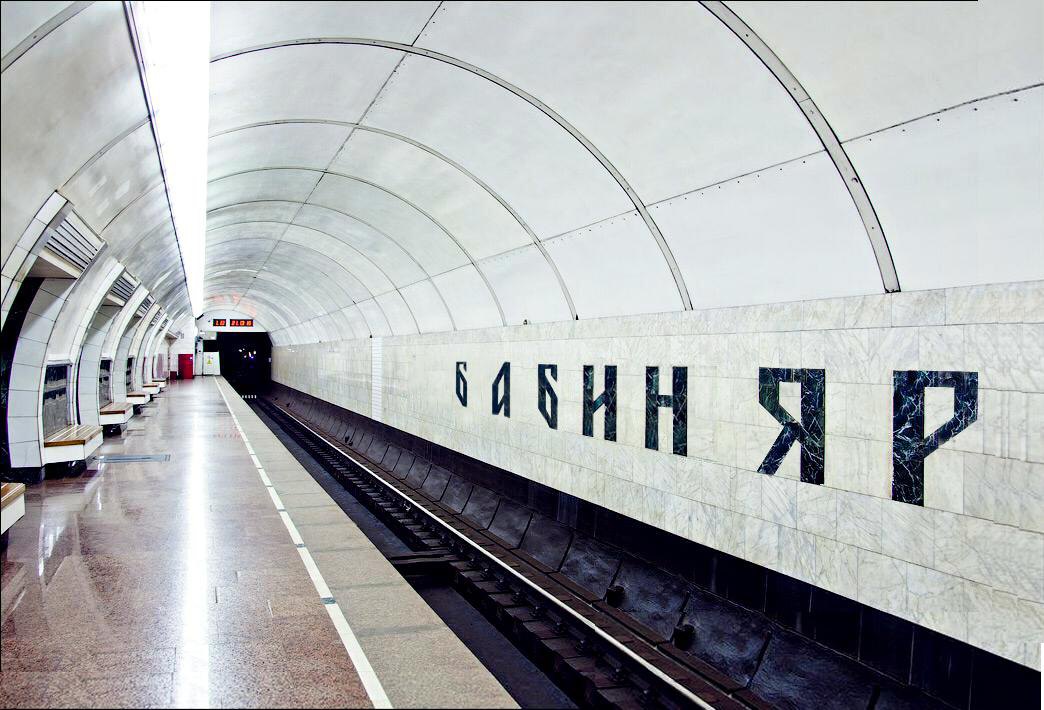
We dropped that idea after a series of consultations with the stakeholders. Furthermore, understanding all the complexity of the metro station renaming procedure, it became clear: it will not “take off” now. Resonance is important, but as important is also a connotation that goes along with that resonance.
I think that, taking into account Vitaliy Klitschko’s interest in this project, nothing is impossible here. But what is your personal attitude to it?
If I appreciated that idea, our team would have been lobbying for that matter.
Frankly speaking, I cannot imagine how would I go to the metro station “Babyn Yar”. It makes me have goosebumps. Hundreds of people have a different opinion, they say, this would actualize the place and memory. But one must not confuse marketing and memorialisation. Memorialisation is deep drilling. It is work with public opinion, work with the offspring of those who were murdered, work with other specialised museums. It is a backbreaking work.
I do not think that by changing the name of the metro station, a social agreement we have been talking about can be reached, or the issue of memory wars, or competition of victims, or the issue of Ukrainian-Jewish relations can be settled. There is such a number of questions that need to be answered in development of a comprehensive memorialisation strategy that the metro station name is far from being a priority. There are many other important challenges to work on. Ukraine’s lobbyism in the IHRA (International Holocaust Remembrance Alliance) for instance.
When will Ukraine join the IHRA? I spoke to Pavlo Klimkin still in his capacity of minister of foreign affairs, and I tried to understand myself how this could be changed and how to make Ukraine join that organisation. I do not know how work on that track develops now.
At a certain point, we clearly realised that “Babi” needed to be replaced with “Babyn” in the organisation name. This is an example of how at a certain moment, we overlooked the role of the civil society, but we followed the feedback, and we reacted.
Initially, using the name “Babi Yar” was a gesture of tribute to the survivors: in their memories and interviews, they used that specific name. However, changing the name turned out to be meaningful for today’s Ukraine.
What major risks do you see in the discussion on Babyn Yar memorialisation, taking into account the actual debate?
The current scandal is a colossal damage to the project’s reputation. Of course, I do not think that this is what the Supervisory Board intended. I am afraid that radicalisation of antagonism around the project is inevitable.
As a result, the project may become toxic. Well, this is a risk for any initiative around which scandals develop.
All the questions have been asked. If there are no answers, this will degrade the situation. People may write petitions, make rallies. What is typically the civil society’s reaction to something that it does not appreciate? If this project provokes rejection, respective reactions may follow.
I would fear losing strategic partners among international organisations – from UNESCO to Yad Vashem – and among historians who were sort of a safeguard and a guarantee that the project’s ideology is not biased, and that the narrative is objective and testifies historical facts, and not political conjuncture.
The centre is supposed to offer a vision of the future. In order to build a future, deep springs within events need to be understood. For me, in the case of the Holocaust, these springs refer to the understanding that any value system that has anything but the absolute value of human life and dignity at its top, will ultimately generate a Babyn Yar.








